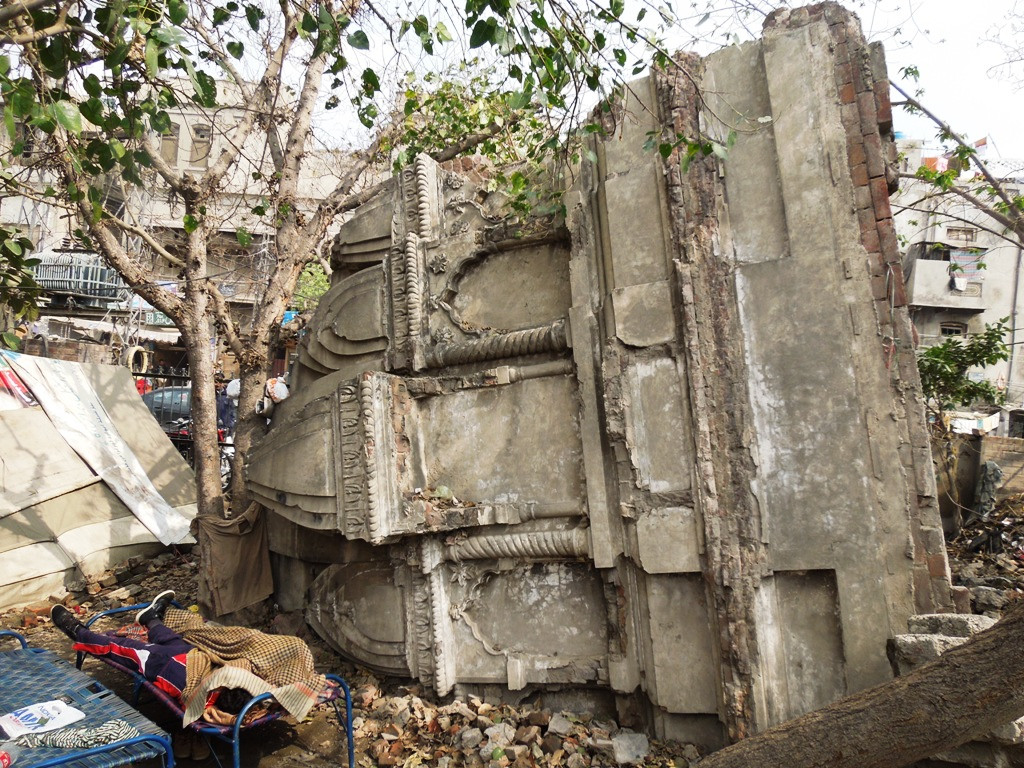By Agha Iqrar Haroon
The news of demolition of Babri Masjid (Mosque), which occurred on December 6, 1992, spread instantly in Lahore and as a reporter I immediately visualized burning temples in Punjab’s Capital. However, it was unimaginable for me that the district government could provide a huge bulldozer to a raged mob for demolition of Jain Mandir— an icon of city, representing post-partition cultural harmony of Lahore. Jain Mandir stood untouched for 35 years after blood-bathed partition of the sub-continent.
Valmiki (also called Balmiki) Mandir in Neela Gumbad was another icon of Hindu-Muslim-Dalit interfaith harmony and it had been operational and unhurt since independence of Pakistan till the unfortunate day. However, it came operational again within next 20 days with the help of local shopkeepers.

I had special memories linked with Jain Mandir. I started my schooling in Central Model School Lower Mall and we used to live in Ichhara. I had to pass through Jain Mandir on my way between my home and school every day except school holidays. “Jain Mandir Aaa Gia Ab Ghar Dour Nahi (Now I am passing through Jain Mandir and now home is not far away)”, was a regular thought in my mind whenever I passed through Jain Mandir in public transport. The moment I saw demolished Jain Mandir, I abruptly began crying and thought that my home would never come on my journey again. That day I was not alone for coverage of burning temples but late Ayesha Haroon also accompanied me. She was working for Feature Section of Frontier Post and I was looking after Reporting team. Ayesha asked me what happened to me when I cried to see demolished Jain Mandir. My answer was abrupt and simple—- “Ayesha I lost an icon of my childhood”. Ayesha till her death was a brave reporter— an inspiration for journalist community of Pakistan and her memories intensified whenever I cross such places where I and she had been reporting together— and of course one spot is Jain Mandir Chowk.
It may be mentioned here that there was no cell-phone service in Pakistan at that time and reporters had to work hard to gather information and news. I asked Ayesha Haroon to rush to New Anarkali because I instantly thought that next target could be Balmiki Mandir in Neela Gumbad. Yes I was right— it was burning along with several stores of automobile spare parts and tyre shops around this moderate Mandir. Fortunately, no causality was reported because local shopkeepers helped Balmiki families to evacuate before mobsters reached the Mandir. Akbari Mandi Temple was also demolished within hours along with Doodhwali Mata Mandir (between Shah Almi Market and Lohari gate).
We ended our day with reporting seven deaths of demolishers, 12 temples partially destroyed and hospitals full of injured persons.
If my memories still work perfectly, I remember that Krishna Mandir, at Ravi Road, Bhairav ka asthan in Ichhara, Ramgali Mandir and Sheetla Mandir were in the list of partially destroyed temples.
The day was over but the beginning for me to work on an investigative story—-
Did mobsters destroy temples in rage against demolition of Babri Mosque or other factors were also involved? One factor could be illegal possession (Qabza). All these temples were situated at prime spots of the city and Qabza groups could use demolition of Babri Mosque to take away this prime Hindu property.
My investigation revealed that Qabza groups were behind the demolition of several temples but one should appreciate the government of Punjab that such elements were not successful in the case of Jain Mandir. At many places, tenants of Evacuee Trust Property captured lands of demolished temples but Jain Mandir remained out of the clutches of Qabza groups. Remains of destroyed Jain Mandir could be seen for next 23 years until remains were taken away and land of temple came under Orange Lane Metro Project.

I believe that demolition of Jain Mandir and Babri Masjid followed by rise of the Vishva Hindu Parishad (VHP) and Bharatiya Janata Party (BJP) and selling hate against Muslims became leverage for election campaigning in India. A new India emerged as centuries—old religious icons disappeared.
